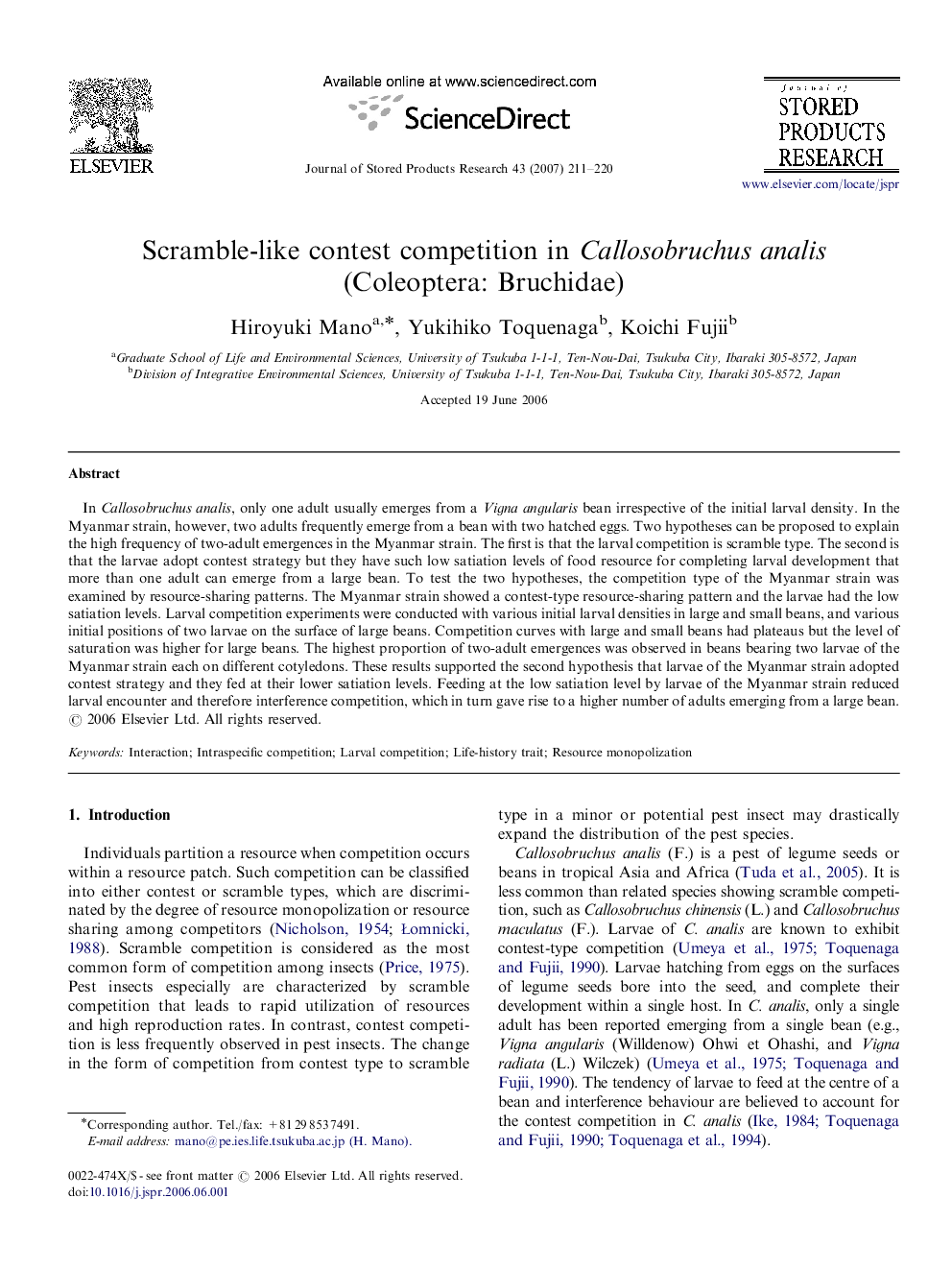| Article ID | Journal | Published Year | Pages | File Type |
|---|---|---|---|---|
| 4517533 | Journal of Stored Products Research | 2007 | 10 Pages |
Abstract
In Callosobruchus analis, only one adult usually emerges from a Vigna angularis bean irrespective of the initial larval density. In the Myanmar strain, however, two adults frequently emerge from a bean with two hatched eggs. Two hypotheses can be proposed to explain the high frequency of two-adult emergences in the Myanmar strain. The first is that the larval competition is scramble type. The second is that the larvae adopt contest strategy but they have such low satiation levels of food resource for completing larval development that more than one adult can emerge from a large bean. To test the two hypotheses, the competition type of the Myanmar strain was examined by resource-sharing patterns. The Myanmar strain showed a contest-type resource-sharing pattern and the larvae had the low satiation levels. Larval competition experiments were conducted with various initial larval densities in large and small beans, and various initial positions of two larvae on the surface of large beans. Competition curves with large and small beans had plateaus but the level of saturation was higher for large beans. The highest proportion of two-adult emergences was observed in beans bearing two larvae of the Myanmar strain each on different cotyledons. These results supported the second hypothesis that larvae of the Myanmar strain adopted contest strategy and they fed at their lower satiation levels. Feeding at the low satiation level by larvae of the Myanmar strain reduced larval encounter and therefore interference competition, which in turn gave rise to a higher number of adults emerging from a large bean.
Related Topics
Life Sciences
Agricultural and Biological Sciences
Agronomy and Crop Science
Authors
Hiroyuki Mano, Yukihiko Toquenaga, Koichi Fujii,
